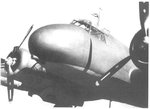schwarzpanzer
Senior Airman
- 662
- Aug 8, 2005
I thought that there was an Italian prototype fighter with it's engine in the back, but it's propellor in front fed by a propshaft (like a Panzer).
I thought if say a Ju88 could have a 50 or 75mm cannon autoloader with it's mechanism in the back of the bomb bay, then the barrel can stretch all the way to the nose?
This would have had impressive anti-tank performance(?) whilst not needing tungsten-cored ammunition.
Your comments please?
I thought if say a Ju88 could have a 50 or 75mm cannon autoloader with it's mechanism in the back of the bomb bay, then the barrel can stretch all the way to the nose?
This would have had impressive anti-tank performance(?) whilst not needing tungsten-cored ammunition.
Your comments please?





